YOU will have read about Iceland recently.
The Nordic nation has hit the headlines due to an ongoing volcanic eruption in an area close to one of the island’s most popular tourist attractions.
Located close the nation’s famous geothermal spa, the Blue Lagoon, a fissure – where lava erupts along a linear volcanic vent – began in the Reykjanes Peninsula near the town of Grindavik on March 16.
It’s the fourth time this particular volcano has erupted since December 2023.
Consistently erupting ever since, it was doing so when my family and I decided to head for the volcanic island for a recent break.
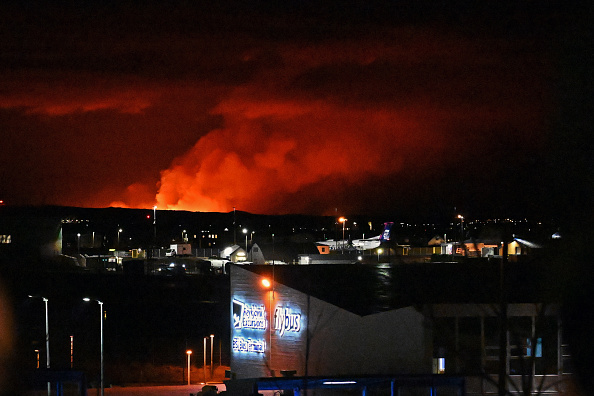 The sky glows orange in Iceland due to molten lava flowing out from a fissure on the Reykjanes peninsula
The sky glows orange in Iceland due to molten lava flowing out from a fissure on the Reykjanes peninsulaWhat is it that is so decidedly attractive about the idea of being in the vicinity of an erupting volcano? Is it the lava? The unpredictability of it course? The potential for destruction of everything in its path?
Maybe it is all three.
Whatever the answer, as we made our way to this fascinating island, we were transfixed by the thought that it was currently experiencing mother nature at her angriest.
Of course, this is nothing new to Iceland, which is also known as ‘the land of ice and fire’.
No, this beautiful, vast landscape has something of a turbulent history, geographically speaking.
Nestled between North Atlantic and Arctic oceans, Iceland's location on the Mid-Atlantic Ridge is above a hot spot – or a mantle plume, in geological terms - which ensures its continuous volcanic activity.
Maybe understandably, with a population of just under 400,000 people, the country is the most sparsely populated in Europe.
Just over a third of its residents live in the capital city, Reykjavík. The rest of them are scattered across the land - which boasts wild beauty at every turn and endless space to boot.
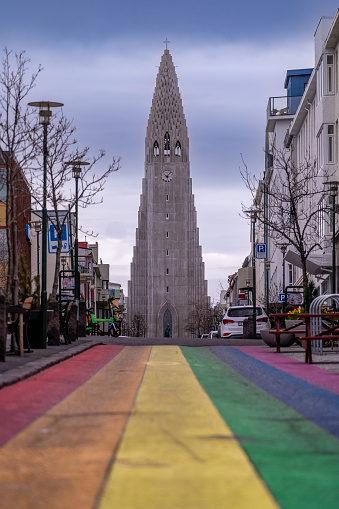 Hallgrímskirkja is a Lutheran parish church located at the heart Reykjavík, Iceland's capital city
Hallgrímskirkja is a Lutheran parish church located at the heart Reykjavík, Iceland's capital cityWhile the hipster chic capital oozes Nordic charm and tradition, the countryside offers everything from rivers, mountains, valleys and waterfalls to glaciers, hot springs and volcanoes.
And it is the latter which are some of its most famous attributes.
In Iceland, volcanoes are a part of everyday life.
Upon arriving in the island, we quickly learnt that wherever you are - in the city or in the countryside - the floor you walk upon is most definitely lava, much to the delight of our eight, seven and five-year-old children.
Since the end of the last ice age, about 10,000 years ago, a third of all lava that volcanos have produced on the Earth's surface have erupted in Iceland.
Over the centuries that lava has cooled, solidified, and gone full circle to become earth once again.
One tour guide explained told us that the most significant lava flow in a single eruption on the planet during the Holocene Period – which stretches from 11,700 years ago to the present day - is the great Þjórsá lava that erupted in Iceland around 8,600 years ago.
Ultimately, he added, way before the Vikings took up residence in Iceland in the year 874 – prior to this the only known inhabitants of the island were Irish monks, who quickly found the prickly terrain too much for them and let without even naming it – the island was always a hotbed for volcanic activity.
It remains so today, but now the Icelandic people who have made it their home are well versed on the positive impacts of their most fiery landmarks.
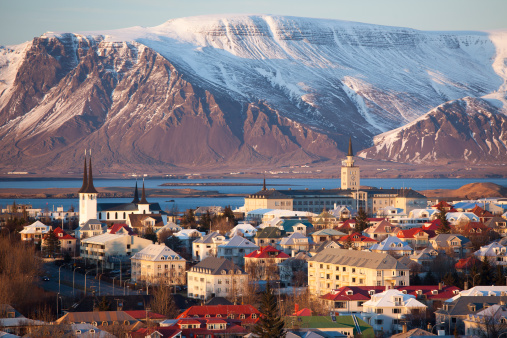 Iceland boasts dramatic landscapes at every turn
Iceland boasts dramatic landscapes at every turnIcelanders are proud of the fact that the nation’s volcanic activity is also responsible for some of its most dramatic natural features.
The mountainous landscapes, black lava fields, black sand beaches, geothermal pools and geysers, and even glaciers all exist due to the continuous interplay between Iceland’s volcanic activity and the natural elements.
Volcanoes, despite their frequent eruptions in the more remote parts of the island, also contribute hugely to Icelandic society by providing geothermal energy, fertile ash, and those unforgettable unique landscapes which draw international tourist trade all year long.
Of course, those who come for the landscape find plenty more to keep them entertained while on the island – which is perfectly positioned for whale-watching expeditions, viewing the Northern Lights or simply exploring some of the unique Nordic creativity that pulsates through the work of its local artists.
There are all manner of ways to enjoy the culture, heritage and beauty of the country while on a short break in Iceland. Here are our top tried and tested attractions for a family adventure in the land of fire and ice…
Lava Show
There may be an ongoing volcanic eruption in Iceland, but you won’t get anywhere near it as the Icelandic authorities have evacuated all local towns and closed off access to the area while nature does its thing. That doesn’t mean you can’t get near some molten lava, however. Since 2018, Icelandic husband and wife duo Júlíus and Ragnhildur have been bringing hot lava to the people through their iconic Lava Show. This exciting experience allows you to sit in a room while a specially trained team recreate a volcanic eruption before your very eyes. Real lava is superheated to a molten state of 1100°C (2000°F) and then poured into the showroom, where, from the safety of your seats, you can clearly see, smell, hear and feel its intense heat. It is a fascinating show, and, with branches in Vík and Reykjavík, this one is not to be missed if you are visiting.
FlyOver Iceland
People tend to expect Iceland to be small, but at 500km wide and 300km long, it is the second largest island in Europe (behind Britain) and the 18th largest island in the world.
Understandably, however long your trip, you might not get time to get to every corner of the country. But thankfully, you don’t have to as there’s a pretty exhilarating way to experience the beauty of the island without leaving your chair. Launched in 2019 and located in the Reykjavik's bustling Grandi Harbour District, FlyOver Iceland is a fabulous ride which takes you on a journey across the island. Using state-of-the-art technology to give you the feeling of flight, you hang suspended, feet dangling, before a 20-metre spherical screen which showcases the most dramatic and beautiful aspects of the country. It literally is breath-taking. When we visited it proved a hit with us all - and was way more exciting than any of us expected. When your children ask ‘can we do that again’ before they have unbuckled their safety belt, well, then you know it’s something special. Treat yourself to this unforgettable experience if you are in Reykjavík.
Blue Lagoon
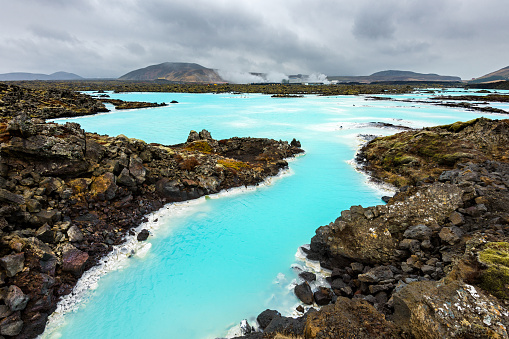 The Blue Lagoon is one of the most popular attractions in Iceland
The Blue Lagoon is one of the most popular attractions in IcelandAnother truly worthy itinerary item for any first-time visitor who has only a short time in Iceland is the Blue Lagoon resort. It is typically Icelandic to indulge in a spot of outdoor bathing in volcanically heated pools, many of which are dotted across the island. Now natural hot pools are plentiful, and are similarly delightful to find and explore, but if you are strapped for time and keen to know what all this thermal bathing is about then the man-made Blue Lagoon is your friend. With its close vicinity to the ongoing erupting fissure near Grindavik, the drive to the Lagoon alone makes it worthwhile. It felt something of a geography expedition when we made our way there, as the smoke from the eruption was visible in the far distance and we had to pass through a lava field to get to there.
Whale-watching
We’ve talked a lot about the land so far, but let’s not forget Iceland’s water-borne activities. Reykjavik’s old harbour is the source of much delight for those wishing to take their exploration of the nation to the seas. We signed up for a whale-watching expedition with Elding Whale-Watching Tours. Setting off the harbour, we were lucky to have a beautiful morning which offered a new perspective of Reykjavík as we sailed away from it into the icy Arctic waters for our maritime adventure. While there is no guarantee that you will spot anything on your trip, our keen-eyed guides kept us well informed of the many species of whale, birds and other sea life known to frequent these waters before they eventually started to show themselves. During our three-hour session we were lucky enough to see two humpback whales, some harbour porpoises and a number of puffins - which had only recently returned to their breeding sites from the open sea (something they only do once a year). Each year, puffins, which are called ‘lundi’ in Icelandic, will return to the breeding site where they were born in April, where they stay until August, before heading back out to sea for another year.
Waterfalls
A trip to Iceland isn't complete without visiting the country's magnificent waterfalls. Each has its own distinct character, dazzling onlookers with its unique shape, size, sound, and surrounding natural features. To reach them, you can either join a waterfall tour or drive around the country – which is well signposted for tourists and easily accessible when you have a set of wheels. We visited the stunning Skógarfoss, which is a short drive from Reykjavík. Cascading down a 60-meter cliff, the powerful curtain of water creates an awe-inspiring display. What’s even better – with three young children in tow – it that it is easy to get to. There is a convenient parking area and a walkway which brings you to this natural wonder without an extensive hike. There are of course many more majestic waterfalls to enjoy across the country – and geysirs and glaciers too -just consult a local travel guide for directions, grab your camera and away you go.
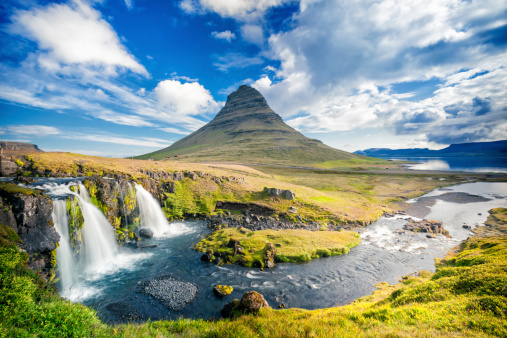 Kirkjufell mountain on the Snaefellsnes peninsula, is one of the most photographed mountains in Iceland
Kirkjufell mountain on the Snaefellsnes peninsula, is one of the most photographed mountains in IcelandMuseums
Iceland is bustling with culture and creativity. There are high quality museums and exhibitions at every turn, exploring everything from art to history and geography too. We sampled quite a few during our trip and one of our favourites was the Maritime Museum. Located in Reykjavík’s Old Harbour, the building, originally a fish-freezing plant, has been recreated to offer a truly engaging insight into the island’s fishing history. A permanent exhibition entitled Fish & folk – 150 years of fisheries, offers a vibrant overview of the trade which is one of the most important on the island and how its practices developed over many decades. With audio and visuals as well as computer games and challenges, this charming museum immerses you in the history of the island and its coexistence with the sea. Similarly impressive is the Whales of Iceland exhibition, which is located just a short stroll away. The largest whale museum in Europe, it features life-size models of 23 whale species that have been seen in Icelandic waters over the years. They are an awesome sight. Coupled with an evocative documentary highlighting the challenges modern society presents to the sea life in our oceans, our time in this museum left us with plenty to think about.
Exhibitions
There was also much to think on during a visit to the Chromo Sapiens exhibition at the Höfuðstöðin art centre in Reykjavík. Created by the Icelandic artist Shoplifter, the centre has been launched specifically to house her multi-sensory installation, which received critical acclaim following its debut at the Venice Biennale in 2019. Using her signature material, synthetic hair extensions, the artist created three multicoloured caves which require viewers to explore sense and stimulation as they pass through. A truly impressive piece of work – which took a team of 100 people a year to create – it was a hit with our whole family, who were more than happy to take time relaxing among their plush surroundings to reflect on the feelings and ideas it inspired within them. Our final cultural visit was more geographical in nature, as we toured the On Power Geothermal Exhibition. Located around 25km outside of Reykjavík, in a stunning area surrounded by lava and moss, the exhibition is on the site of the Hellisheiði ON Power plant, which is one of the largest single-site geothermal power plants on the planet. Our tour, which was supplemented by plenty of time spent in their fully equipped children’s innovation area, provided a fascinating insight into how the firm harnesses the power of the land to produce green, sustainable energy to fuel the nation.
Where to stay…
The key to any great family holiday is finding a great place to stay. We found this particularly true of our visit to Iceland, where busy, activity-filled days, and lots of outdoor adventures, made us especially grateful for our fabulous room and the ridiculously comfortable beds at the Reykjavik Marina hotel, which is based in the city’s Old Harbour area. When I say this was well placed, I mean it was brilliantly placed for all of the excursions and activities we enjoyed during our trip. Typically Nordic, in its understated yet chic design, there are welcome nods to the maritime history of the area throughout the building – which offers a cosy lounge with an open fire, a bustling bar/restaurant and a quieter library area, as well as an on-site hair salon. Located next to the historical, and still fully functioning, dry-dock Slippur, it is only a short walk from the hotel to the centre of Reykjavík city.
For room rates and bookings click here.

